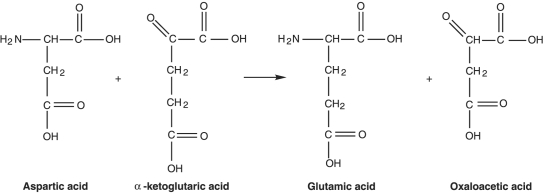B) False
Correct Answer

verified
Correct Answer
verified
Multiple Choice
The advantage of the pentose phosphate pathway is that it produces all of the following EXCEPT
A) precursors for the synthesis of glucose.
B) NADPH.
C) three ATPs.
D) precursors for the synthesis of amino acids.
E) precursors for nucleic acids.
G) B) and E)
Correct Answer

verified
Correct Answer
verified
Multiple Choice
Which of the following uses CO2 for carbon and H2 for energy?
A) chemoheterotroph
B) chemoautotroph
C) photoheterotroph
D) photoautotroph
F) A) and C)
Correct Answer

verified
Correct Answer
verified
Multiple Choice
Figure 5.7
 -The graph at the left in Figure 5.7 shows the reaction rate for an enzyme at its optimum temperature. Which graph shows enzyme activity at a higher temperature?
-The graph at the left in Figure 5.7 shows the reaction rate for an enzyme at its optimum temperature. Which graph shows enzyme activity at a higher temperature?
A) a
B) b
C) c
D) d
F) A) and C)
Correct Answer

verified
Correct Answer
verified
Multiple Choice
Figure 5.2
 -What type of reaction is in Figure 5.2?
-What type of reaction is in Figure 5.2?
A) reduction
B) transamination
C) dehydrogenation
D) decarboxylation
E) oxidation
G) A) and B)
Correct Answer

verified
Correct Answer
verified
Multiple Choice
If a cell is starved for ATP, which of the following pathways would most likely be shut down?
A) glycolysis
B) Kreb's cycle
C) pentose phosphate pathway
D) Krebs cycle and glycolysis
F) A) and C)
Correct Answer

verified
Correct Answer
verified
Multiple Choice
Which of the following is the best definition of oxidative phosphorylation?
A) A proton gradient allows hydrogen ions to flow back into the cells through transmembrane protein channels, releasing energy that is used to generate ATP.
B) Electrons are passed through a series of carriers to O2.
C) Electrons are passed through a series of carriers to an organic compound.
D) ATP is directly transferred from a substrate to ADP.
F) None of the above
Correct Answer

verified
Correct Answer
verified
Multiple Choice
A urease test is used to identify Myobacterium tuberculosis because
A) M. bovis can cause tuberculosis.
B) some bacteria reduce nitrate ion.
C) urea accumulates during tuberculosis.
D) M. tuberculosis produces urease.
E) urease is a sign of tuberculosis.
G) All of the above
Correct Answer

verified
Correct Answer
verified
Multiple Choice
Which of the following is NOT necessary for respiration?
A) quinones
B) flavoproteins
C) oxygen
D) cytochromes
E) a source of electrons
G) All of the above
Correct Answer

verified
Correct Answer
verified
True/False
Carbon fixation occurs during the light- independent phase of photosynthesis.
B) False
Correct Answer

verified
Correct Answer
verified
Multiple Choice
Gallionella bacteria can get energy from the reaction Fe2+ -Fe3+. This reaction is an example of
A) the Calvin- Benson cycle.
B) reduction.
C) fermentation.
D) oxidation.
E) photophosphorylation.
G) A) and B)
Correct Answer

verified
Correct Answer
verified
Multiple Choice
Which organism is NOT correctly matched to its energy source?
A) chemoautotroph - Fe2+
B) chemoheterotroph - glucose
C) chemoautotroph- NH3
D) photoheterotroph - light
E) photoautotroph - CO2
G) A) and E)
Correct Answer

verified
Correct Answer
verified
Multiple Choice
Figure 5.5
 -Which of the graphs in Figure 5.5 best illustrates the activity of an enzyme that is saturated with substrate?
-Which of the graphs in Figure 5.5 best illustrates the activity of an enzyme that is saturated with substrate?
A) a
B) b
C) c
D) d
E) e
G) A) and E)
Correct Answer

verified
Correct Answer
verified
Multiple Choice
An enzyme, citrate synthase, in the Krebs cycle is inhibited by ATP. This is an example of all of the following EXCEPT
A) feedback inhibition.
B) competitive inhibition.
C) noncompetitive inhibition.
D) allosteric inhibition.
F) C) and D)
Correct Answer

verified
Correct Answer
verified
Multiple Choice
Which of the following statements regarding metabolism is FALSE?
A) Heat may be released in both anabolic and catabolic reactions.
B) ADP is formed in anabolic reactions.
C) ATP is formed in catabolic reactions.
D) Anabolic reactions are degradative.
F) None of the above
Correct Answer

verified
Correct Answer
verified
True/False
The pentose phosphate pathway can be characterized as an anabolic pathway.
B) False
Correct Answer

verified
Correct Answer
verified
True/False
The use of enzymes is necessary to increase the activation energy requirements of a chemical reaction.
B) False
Correct Answer

verified
Correct Answer
verified
Multiple Choice
Which of the following statements are true? 1- Electron carriers are located at ribosomes. 2- ATP is a common intermediate between catabolic and anabolic pathways. 3- ATP is used for the long- term storage of energy and so is often found in storage granules. 4- Anaerobic organisms are capable of generating ATP via respiration. 5- ATP can be generated by the flow of protons across protein channels.
A) 1, 2, 3
B) 1, 3, 4
C) 2, 3, 5
D) 2, 4, 5
E) All of the statements are true.
G) None of the above
Correct Answer

verified
Correct Answer
verified
Multiple Choice
In noncyclic photophosphorylation, O2 is released from
A) H2O.
B) chlorophyll.
C) sunlight.
D) CO2.
E) C6H12O6.
G) A) and E)
Correct Answer

verified
Correct Answer
verified
Multiple Choice
A strictly fermentative bacterium produces energy
A) by aerobic respiration only.
B) only in the absence of oxygen.
C) by glycolysis only.
D) only in the presence of oxygen.
E) by fermentation or aerobic respiration.
G) B) and C)
Correct Answer

verified
Correct Answer
verified
Showing 21 - 40 of 57
Related Exams